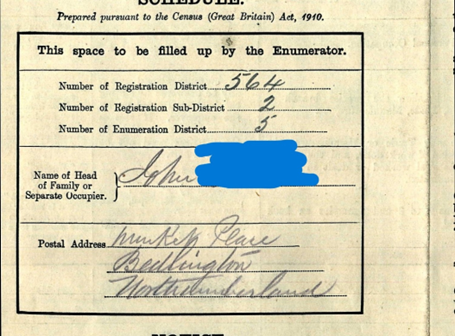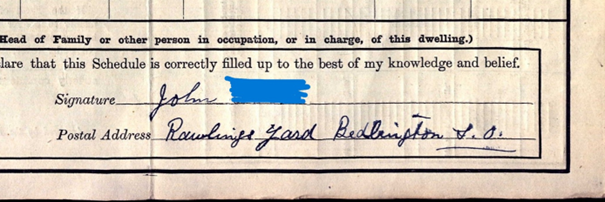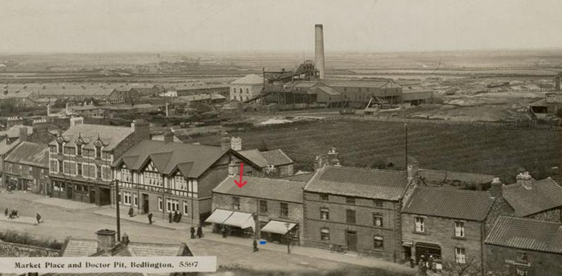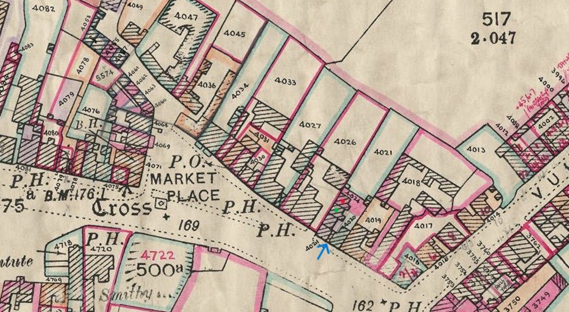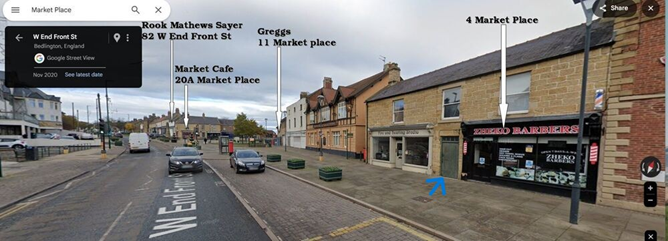Contributor Leaderboard
Popular Content
Showing content with the highest reputation on 01/03/25 in all areas
-
@Alan Edgar (Eggy1948)Make yourself a cuppa! This is going to be long! It’s quite easy to mistake schedule numbers with house numbers. Another common mistake is to think that every schedule number is a house. What the census documents record are the number of ‘households’ and it is these ‘households’ that are given a schedule number. Space was at a premium and living space could be rented out by the room so that several households often lived in the same house. This was very common practice in Bedlington. At the time of the 1911 census, the ‘Market Place’ had 33 households of which one was a common lodging house with 25 male residents and one private house which was unoccupied. If we look at the enumerator’s summary book these 33 households, with the exception of the Post Office, the Turk’s Head public House and the Howard Arms Hotel all had the same address – Market Place Bedlington. This, you could say, was the ‘formal’ address at which the household resided. This was the address written by the enumerator on the census form which he delivered to the household to be filled in by the head of that household. It was also the address he used when transcribing the completed form to his summary book. While this system worked well for the enumerator, who had a set route to follow, it wasn’t the ideal system for the people who lived there should they, for example, need to impart the whereabouts of their home to intended visitors or tradesmen. The residents of the Market Place (and many other places) found their own way of describing their location and this was usually by means of easily identifiable features in the vicinity of their home. One of the wonderful things about the 1911 census is that the forms filled in by each household were not destroyed once the enumerator had transcribed their content to his summary book. The householders, regardless of what the enumerator had written on his part of the census form, often wrote their address in the manner in which they would give it to would-be visitors. So is the case with MarknMargaret’s relative, Mr John T, which greatly eases the task of identifying where he lived. The schedule nr 26 refers to this address written by the enumerator: Mr John T, however, gives the following address as his place of residence: In other words, John’s household comprising himself, his wife and his grandson, lived in the yard of the Rawlings family home. There were a number of such yards all along Front Street, Vulcan Place and Glebe Row. The main family home, in this case the Rawlings, faced the main street and the yard faced away from the street at the rear of the house. Basically, anything in the yard that was deemed ‘habitable’ could be rented out. They could be small houses to accommodate employees but equally well they could just be small outhouses or lean-to buildings. Mr William Rawling lived in the Market Place in a building facing the main street and in this building was also his business - Merchant Tailor & Mens Wear. The location is easily identifiable from its location, next door and to the east of the Howard Arms hotel, as recorded in the summary book. As I said, the enumerator had a set route to follow: Here is the Rawling family home and business, arrowed red. I’ve also marked a doorway, adjoining the tailor’s shop, in blue. This opened into a passageway leading to the yard: If you look closely at the angle between the house which I’ve arrowed and the larger building to its right, you can just make out the roof and chimney of the yard buildings where Mr John T lived. I don’t know the date of this photo but the map below is from 1910 and you can clearly see that there are two small buildings in the yard. These had each two rooms, one of which served as kitchen/livingroom/diningroom (and at times even as bedroom). In the first of these two buildings (marked green), adjoining the tailor’s shop, lived Mr William Errington, the previous occupier of the tailor’s shop. It was in his day, however, a grocer’s shop. He occupied just one room. In the second of the two houses (marked red) lived MarknMargaret’s relative, Mr John T, who occupied two rooms – probably one up and one down. On the map I’ve also arrowed in blue the doorway to the passageway which I marked in blue on the above photo This is the same doorway shown on Alan’s photo (reproduced below): Hope this is of help. If MarknMargaret would like copies of the original documentation let me know. If they could pass on an e-mail address through yourself, Alan, that would be ideal.2 points

.thumb.jpg.7493ddab4a696108cf2b849323d3c155.jpg)
